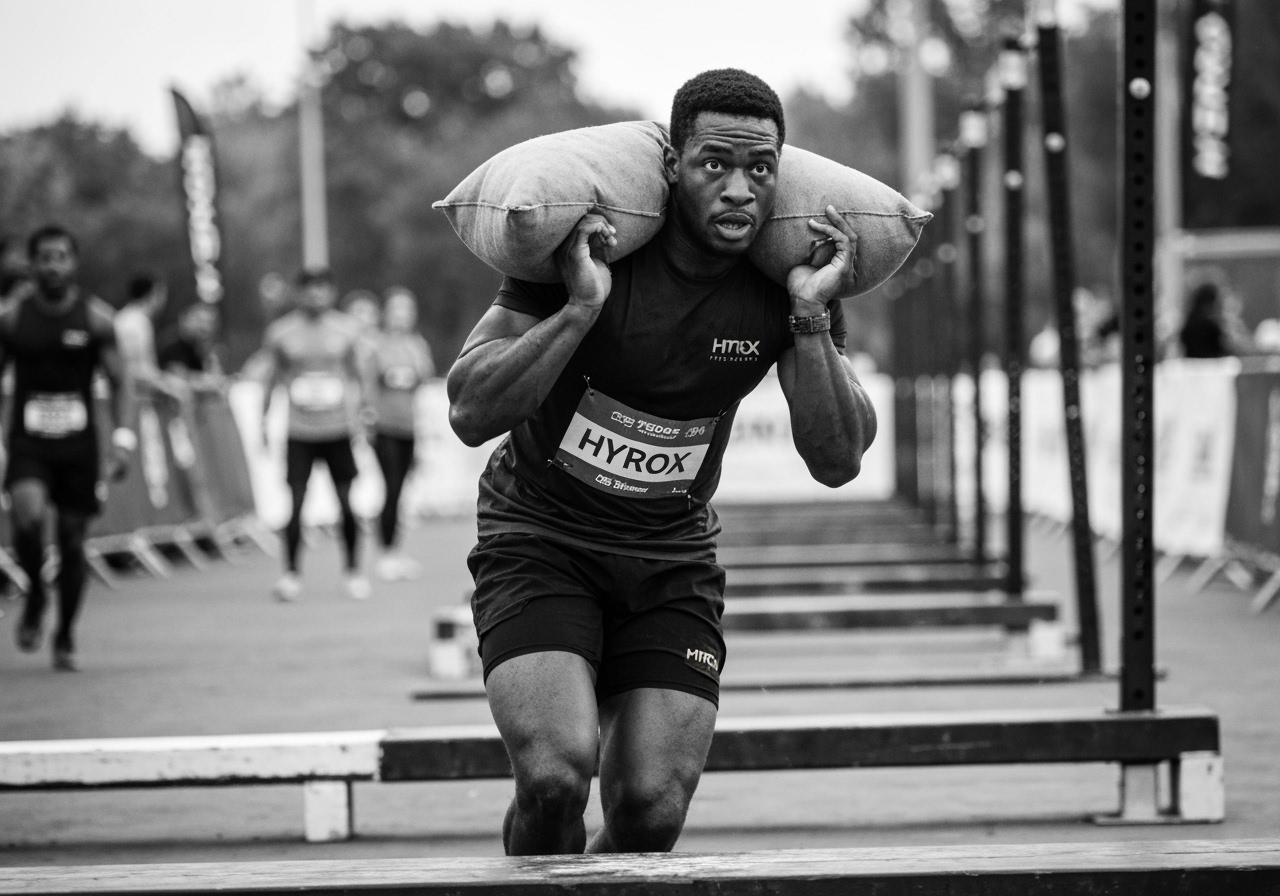
Running is the backbone of HYROX. Between stations, you're running 8 x 1 km intervals, and if you're not efficient, the fatigue snowballs into slower transitions, weaker station performance, and a frustrating race experience. The good news? Most runners lose time because of avoidable mistakes—not lack of fitness.
Why HYROX Running Mistakes Are Costing You Minutes
Here are five mistakes that could be slowing you down—and exactly how to fix them today.

1. Running Every Kilometer at the Same Pace
The Mistake: Treating each 1 km as a flat-out sprint or running all 8 intervals at the same steady pace. Both extremes burn you out.
The Fix:
Train with negative splits or controlled pacing. For example: run your first 1 km at 80% effort, then build gradually. This ensures you're not drained before heavy stations like sled push or wall balls.
Pro Tip: Practice race simulations—alternate 1 km run + station—so your pacing adapts to real fatigue, not treadmill speed.
2. Skipping Run-Specific Strength Work
The Mistake: Thinking that running alone improves your run splits. HYROX running is loaded running—you're under muscular fatigue from sleds, lunges, and carries.
The Fix:
Add strength-endurance lifts like lunges, Bulgarian split squats, and sled drags into your training. Stronger quads, hamstrings, and glutes hold your pace steady when your legs are heavy.
Pro Tip: Finish strength sessions with a 500m–1km run to replicate "running on tired legs."
 strength training for running performance improvement" style="width: 100%; max-width: 600px; height: auto; border-radius: 8px;" />
strength training for running performance improvement" style="width: 100%; max-width: 600px; height: auto; border-radius: 8px;" />
3. Poor Transition Discipline
The Mistake: Jogging into or out of stations, stopping for water every time, or losing rhythm between stations. Those seconds add up.
The Fix:
Treat transitions like sprints. Practice fast walk/jog entries and exits, and keep water breaks strategic (before wall balls, for example—not every km).
Pro Tip: In training, set a stopwatch for "run in–station–run out" drills. You'll shave 1–2 minutes across the whole race just by tightening transitions.
4. Breathing Inefficiently
The Mistake: Shallow chest breathing during runs and stations leads to oxygen debt and early fatigue.
The Fix:
Use diaphragmatic breathing—inhale deep into your belly, exhale fully. On runs, sync breaths with strides (e.g., 2 steps inhale, 2 steps exhale). This keeps oxygen levels high when fatigue mounts.
Pro Tip: Practice breathing control in warm-ups and low-intensity runs. It pays off when you're under stress in competition.
5. Neglecting Recovery Runs
The Mistake: Only doing speed work or high-intensity intervals, leaving no space for aerobic base development.
The Fix:
Add easy 30–40 min recovery runs at conversational pace. This builds efficiency, improves endurance, and reduces injury risk—so you're not gassed before the final runs.
Pro Tip: Treat recovery runs as movement quality sessions. Focus on posture, stride efficiency, and relaxed breathing.

The Impact of These Fixes
Smart Pacing
Save 30-60 seconds per race by avoiding early burnout
Strength Work
Maintain speed even when legs are fatigued
Tight Transitions
Cut 1-2 minutes from total race time
Better Breathing
Reduce oxygen debt and improve recovery
Final Thoughts
HYROX running isn't just about running fast—it's about running smart under fatigue. Avoid these five mistakes, and you'll not only cut down your run splits but also carry more energy into each station. The payoff? A smoother, faster, and more competitive race.